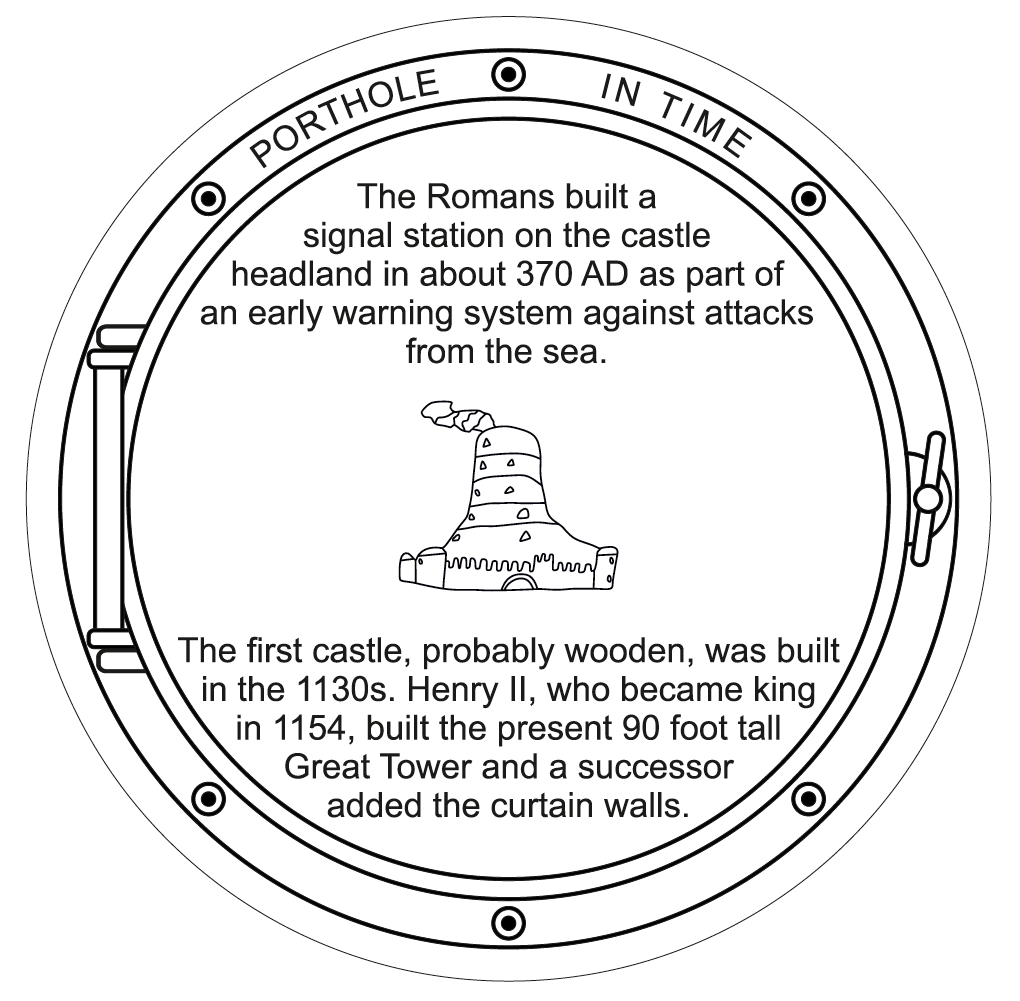
Britain was a province of the Roman Empire from 43 CE (AD) until the year 410. The Romans moved northwards, reaching modern-day York by 71 CE, where they established a fort following their defeat of the Celtic tribe, the Brigantes, who had settlements in places such as York, Aldborough and Catterick.
While York (known to the Romans as Eboracum) became a crucial military centre for Roman Britain, no defensive structures were built along the sparsely populated coast of Yorkshire until around 370 CE. At this time an almost 60 kilometre-long (37 mile) chain of signal stations was built, stretching from Huntcliffe (Saltburn-by-the-Sea) in the north to Filey in the south. Five have been identified in Huntcliffe, Goldsborough (a mound), Ravenscar (a sandstone slab with an inscription), Scarborough (on the headland), and Filey.
These signal stations functioned to warn the authorities by fire and smoke signals of raids from the sea, in order to protect the rich farming land and wealthy villas between the coast and York. Coastal raiding by Picts, Gaels and Saxons became an increasing problem for the Romans throughout their British territories, and a large number of coastal defences were built, the largest of all being the ‘Saxon Shore’ along the south-east coast.
Scarborough’s signal station was discovered in the 1920s at the edge of the headland, although some had been lost to coastal erosion. Like the rest of the chain, the station consisted of a fortified tower, which is estimated to have been as tall or taller than the current castle keep (27 to 30 metres high or 90 to 100 ft). It was defended by a deep ditch and curtain wall with a gatehouse before the courtyard.
Unlike the lack of archaeological evidence for any Anglo-Saxon settlement in Scarborough, the Romans left more than just the signal station; coins from the harbour and quern stone and pottery fragments from near the modern town centre have also been found. In 2021 the remains of a large complex of Roman buildings was discovered on the site of a new housing development at Middle Deepdale outside Scarborough. The buildings included a bathhouse and a circular central room with a number of rooms leading off it. The discovery was a unique find in Britain and it appears that it was the remains of either a high-status Roman villa or of a Roman religious community (or a combination of both).